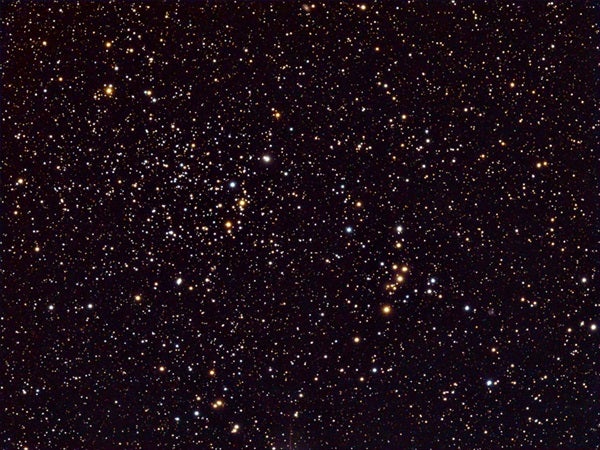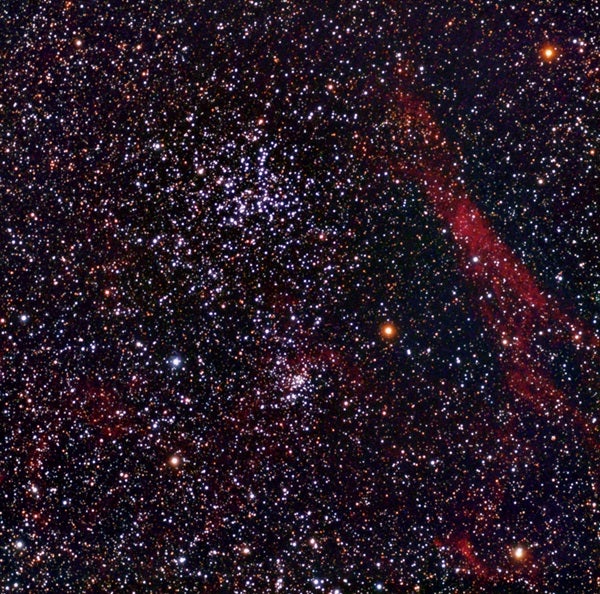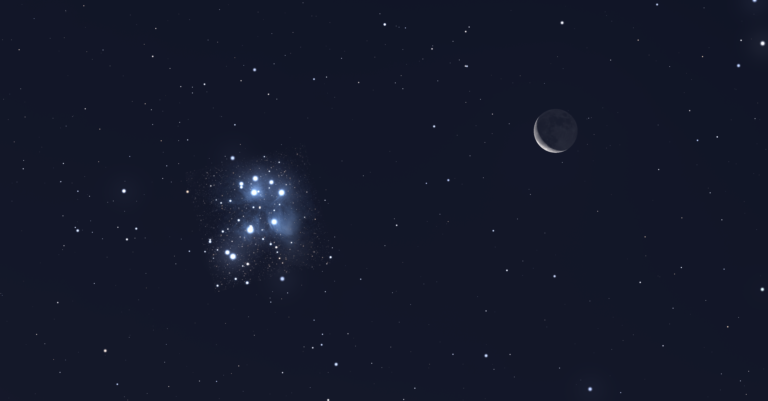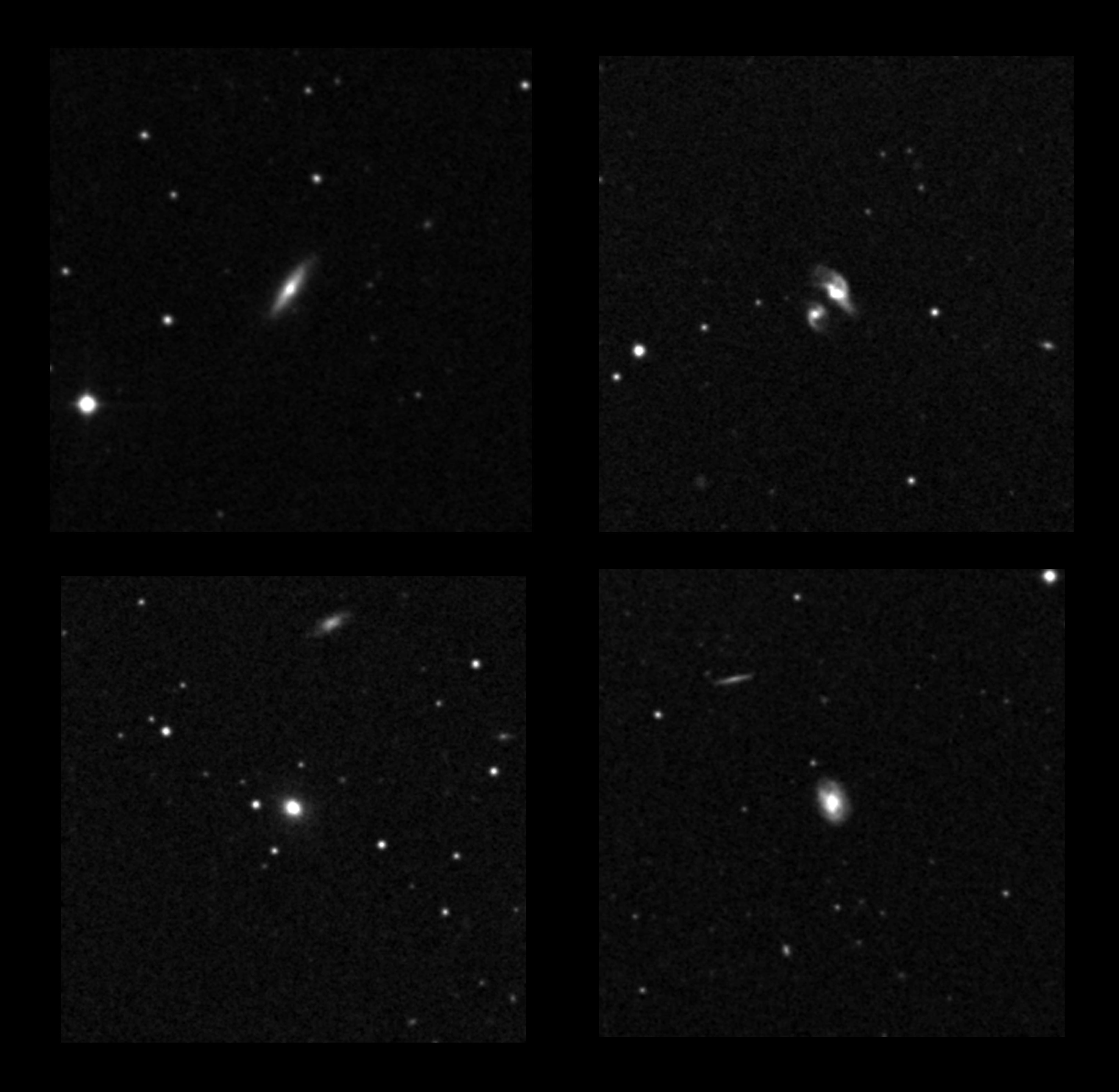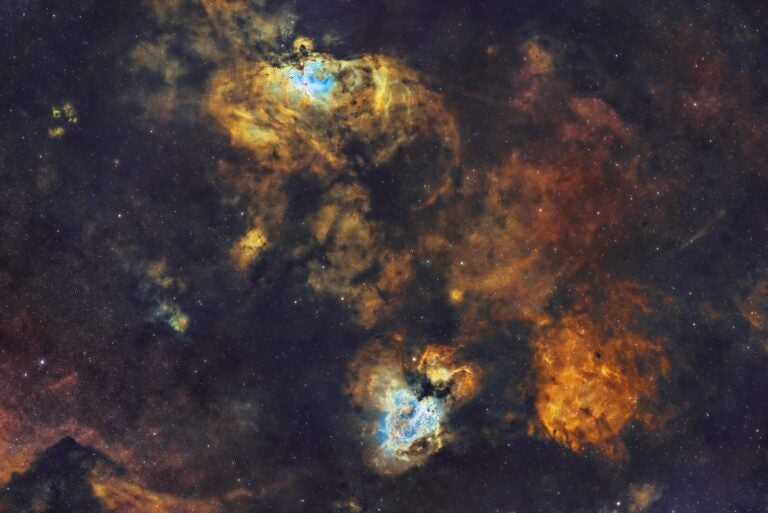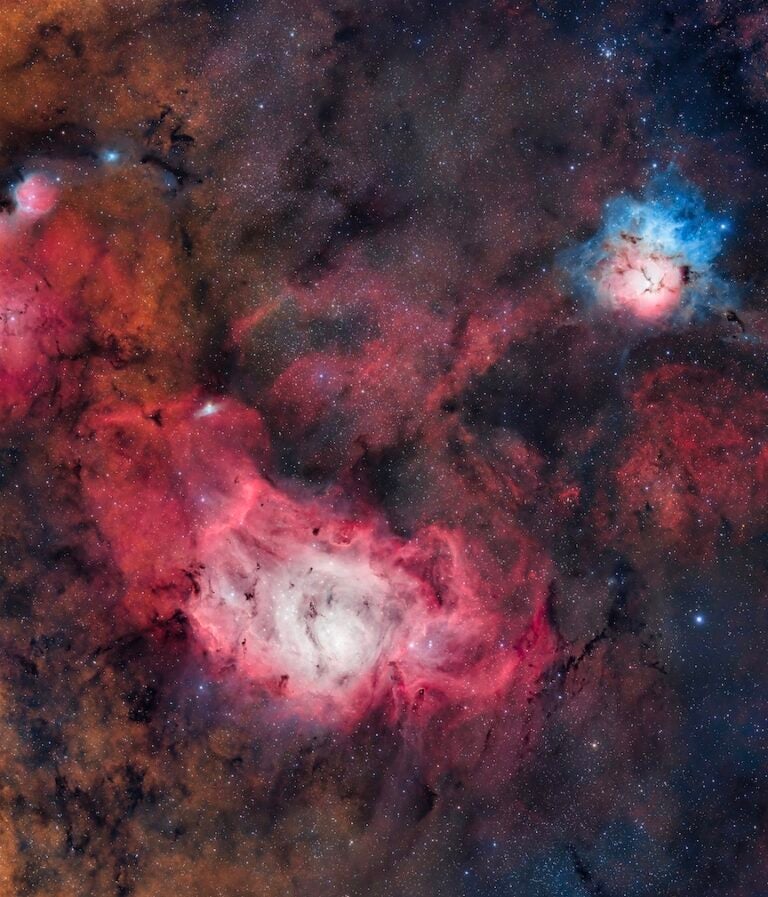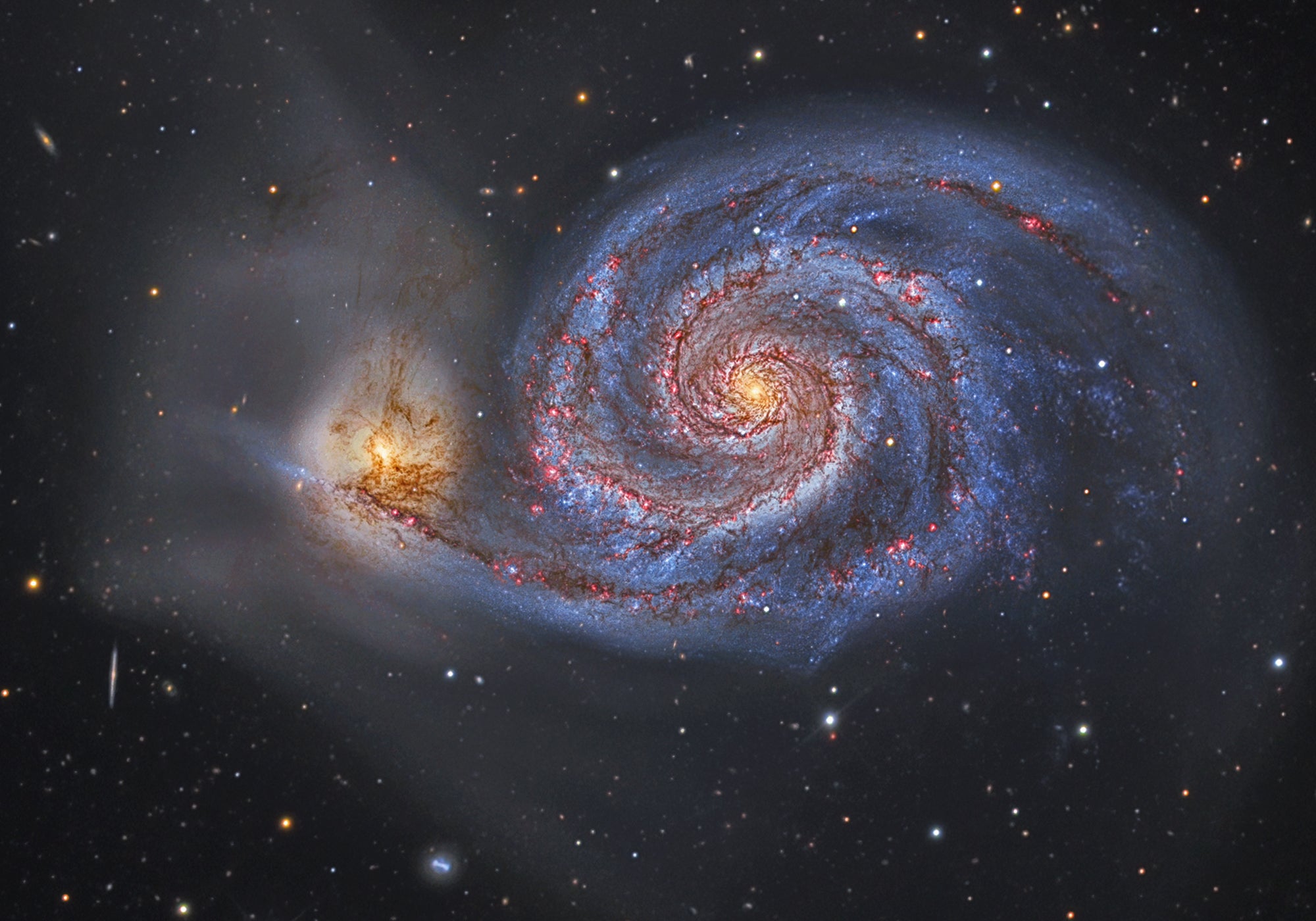But did you know that the winter sky holds other intriguing cluster pairs worth contemplating? Here are a few.
In M38’s shadow
M38 is a popular sky target that spans 21′ and shines at magnitude 6.4 in the central region of Auriga. Only 33′ to the south-southwest lies NGC 1907, a forget-me-not open cluster that’s easy to overlook owing to its diminutive size (7′) and relative dimness (magnitude 8.2).
Despite the disparate sizes of these clusters, astronomers once believed that they formed a true binary system. Their proper motions, however, reveal that they developed in different parts of the galaxy. In the near past, their orbital motions caused them to have a close encounter. We still see them today flying by one another, although they are 1,200 light-years apart.
Turn your attention now to another bright Messier open cluster — magnitude 5.1 M35 in Gemini. This beautiful 30′-wide splash of stellar wonder is one of the richest of its kind in the direction away from the Milky Way’s center.
Like M38, it too has a tiny (5′) and faint (magnitude 8.6) companion cluster, NGC 2158, 26′ to the southwest. In this case, NGC 2158 looks small because, at 11,000 light-years away, it is six times more distant than its mate; only because of perspective do we see them as an apparent cluster pair.
An illusion in Taurus?
Now look about 8½° east of brilliant Aldebaran (Alpha [α] Tauri) for another curious pairing of clusters: magnitude 7.0 NGC 1807 and magnitude 7.7 NGC 1817. Separated by only 27′ and oriented west-southwest to east-northeast, these mismatched neighbors may not be a pair of clusters after all.
A surprise in Cassiopeia?
Cassiopeia has several open clusters of interest. One of its more fashionable ones is M103, which lies 1° east-northeast of Ruchbah. Several other galactic clusters also populate that region, three of which form a popular open cluster arc about 1½° farther to the east: NGC 654, NGC 659, and NGC 663.
Despite the close proximity of NGC 663 to NGC 659 (a scant 36′), these clusters have no relation to each other. The twist is that NGC 659 not only has much in common with NGC 654 (including its distance), but it is also a near twin of M103: Both lie about 8,000 light-years distant, measure 6′ in apparent diameter, shine around 8th magnitude, contain some 180 members across 15 light-years of space, and have ages between 20 and 25 million years!
The night sky is full of wonderful surprises, sometimes two at once. As always, enjoy the views and send your thoughts to sjomeara31@gmail.com.


